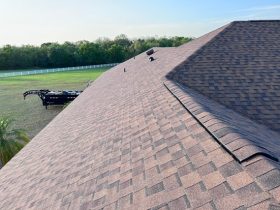Building inspections are comprehensive assessments of a property’s condition conducted by qualified professionals to identify potential issues, safety hazards, and non-compliance with local building codes and regulations. Building inspections are essential for making informed decisions in a city like Sydney, where the property market is highly competitive and diverse. They help buyers avoid costly surprises, enable sellers to address issues before listing their properties and allow property owners to stay on top of maintenance and repairs. Building inspections contribute to Sydney’s built environment’s safety, livability, and value.
Case of the hidden termite infestation
A building inspector in Sydney uncovered a massive termite infestation during a pre-purchase inspection of a luxurious waterfront property. The inspector noticed small mud tubes on the foundation walls and decided to investigate further. Upon closer examination, it was revealed that termites had eaten away a significant portion of the structural timber, compromising the integrity of the entire building. This finding highlights the importance of regular termite inspections and the value of hiring experienced building inspectors who know where to look for these elusive pests. By catching termite infestations early, property owners can save thousands of dollars in repair costs and prevent potential safety hazards.
Mystery of the illegal building modifications
Some property owners resort to unauthorized renovations that violate local building codes and regulations to maximize living space or accommodate changing needs. In one extraordinary case, a building inspector in Sydney stumbled upon a secret underground bunker during a routine inspection of a suburban property. The owner had excavated a large area beneath the house and constructed a hidden room without permits or approvals. The bunker posed a safety risk and raised concerns about potential illegal activities.
Illegal building modifications range from minor alterations, such as removing load-bearing walls, to more extensive projects, like constructing unauthorized extensions or converting garages into living spaces. These modifications not only compromise the safety and structural integrity of the property but also create legal and financial liabilities for owners and occupants.
Hazard of asbestos and lead paint
Sydney’s rich architectural history means many buildings date back several decades or even centuries. While these properties are cherished for their character and charm, they can also harbour hidden health hazards, such as asbestos and lead paint. Asbestos, a once-popular building material, was widely used in Sydney until the 1980s. When disturbed or damaged, asbestos fibres become airborne and cause serious respiratory diseases, including lung cancer and mesothelioma. Building inspectors in Sydney have discovered asbestos in various forms, from insulation and flooring to roofing materials and wall cladding.
Similarly, lead paint, commonly used in residential properties until the 1970s, poses a significant health risk, particularly to young children. Ingesting or inhaling lead dust causes developmental delays, learning difficulties, and other neurological problems. Building inspectors in Sydney have found lead paint in many older properties, often hidden beneath layers of newer paint. These findings highlight the importance of testing for asbestos and lead paint during building inspections, especially in older properties. By identifying and safely removing these hazardous materials, property owners protect the health and well-being of occupants and ensure compliance with current regulations. Click to read more about building inspections in Sydney.
Surprise of hidden structural damage
A building inspector in Sydney discovered a significant crack in the foundation of a multi-story apartment complex during a routine inspection. Further investigation revealed that the crack was caused by a shifting soil layer beneath the building, which had gone unnoticed for years. The inspector’s finding immediately stabilizes the foundation and prevents a potential collapse. Poor construction, water intrusion, or natural disasters cause hidden structural damage. These issues often develop slowly over time, making them easier to detect with the trained eye of a professional building inspector. By uncovering these problems early, property owners proactively rectify them and avoid more extensive and expensive repairs.










